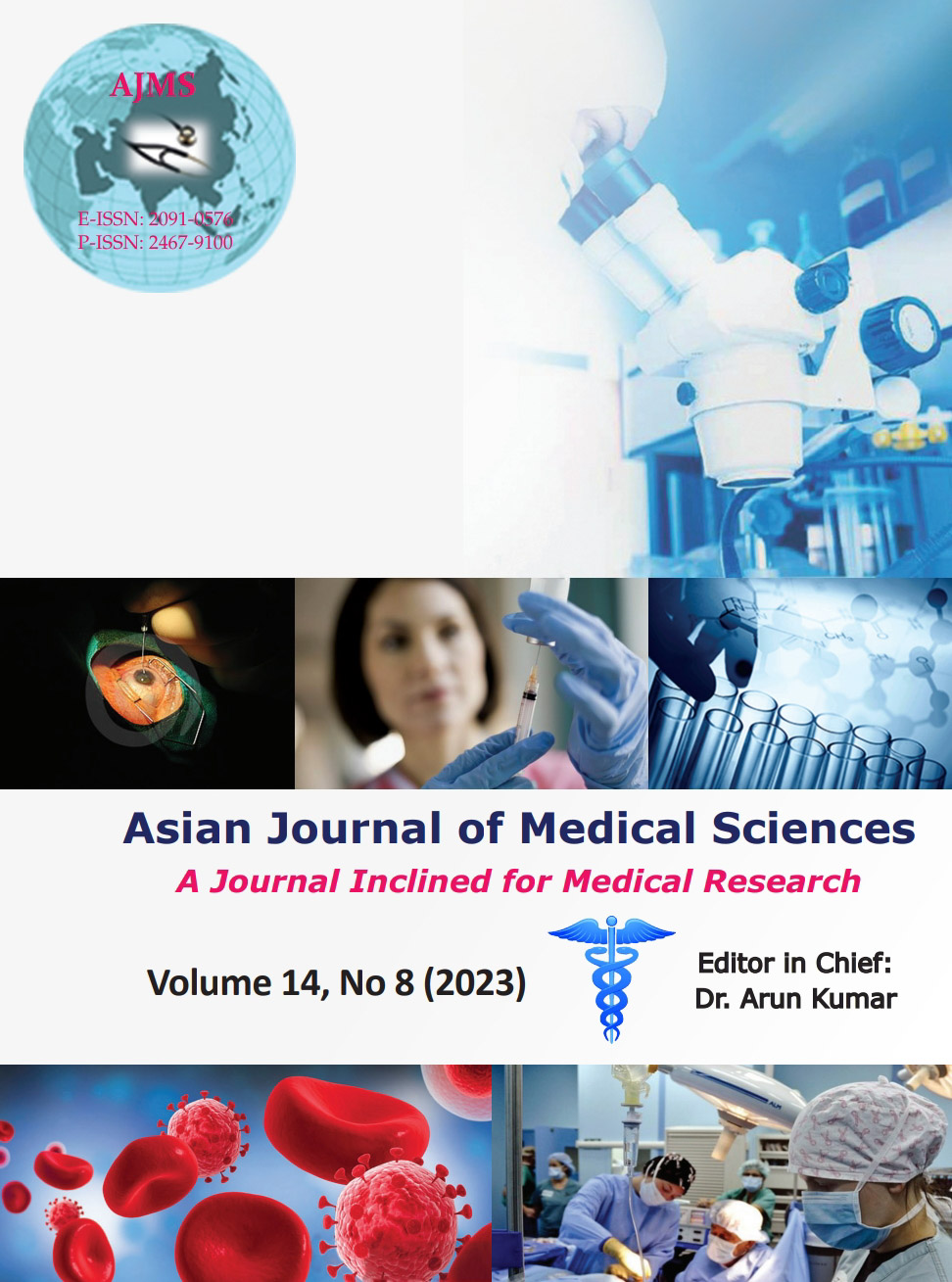Correlation between correctly sized uncuffed endotracheal tube and ultrasonographically determined subglottic diameter in pediatric population
Keywords:
Airway ultrasonography; Endotracheal tube size estimation; Pediatric airway; Pediatric anesthesiaAbstract
Background: The size of the airway varies greatly in pediatric patients, making it difficult to predict an appropriate size Endotracheal tube (ETT) for securing the airway. Several formulae are used to predict approximate ETT size. With the wider availability of ultrasonography (USG), many clinicians have suggested it as a useful tool for airway management and have used USG to measure tracheal dimensions in adults and children.
Aims and Objectives: The primary aim of this study was to evaluate the usefulness of USG for the selection of correct sized uncuffed ETT in pediatric patients and the secondary aim was to correlate the age-based formula with ultrasound measured subglottic diameter for predicting the size of ETT.
Materials and Methods: A total of 64 patients of either gender in the age group of 2–6 years were enrolled in the study. Standard anesthetic induction was done and transverse subglottic diameter was measured using USG. The minimal transverse subglottic diameter was measured and noted and the patient was intubated with the tube size as determined by modified Cole’s age-based formula.
Results: Out of 64 patients, 33 were male and 31 female. Average age was 3.9 (±1.47) years, 42.2% belonged to the age group of (2–3) years, average weight of the patients was 20.3 (±10.45) kg. The mean ETT outer diameters (OD) based on age-based formula was 6.81 mm compared to 6.91 mm and 6.78 mm by USG based and actual ETT OD, respectively. Both the age based ETT OD and USG-based ETT OD showed good correlation with actual ETT OD used with r-value of 0.891 and 0.876, respectively.
Conclusion: Although USG is a non-invasive, cost-effective, and reproducible technique its routine use for estimating ETT size in pediatric patients could not be justified over age-based formula as both of them have comparable results (statistically insignificant). The success rate of age-based formula and USG in precisely predicting ETT outer diameter is comparable with the size of actual ETT outer diameter (78% vs. 75%, P=0.86).
Downloads
Downloads
Published
How to Cite
Issue
Section
License
Copyright (c) 2023 Asian Journal of Medical Sciences

This work is licensed under a Creative Commons Attribution-NonCommercial 4.0 International License.
Authors who publish with this journal agree to the following terms:
- The journal holds copyright and publishes the work under a Creative Commons CC-BY-NC license that permits use, distribution and reprduction in any medium, provided the original work is properly cited and is not used for commercial purposes. The journal should be recognised as the original publisher of this work.
- Authors are able to enter into separate, additional contractual arrangements for the non-exclusive distribution of the journal's published version of the work (e.g., post it to an institutional repository or publish it in a book), with an acknowledgement of its initial publication in this journal.
- Authors are permitted and encouraged to post their work online (e.g., in institutional repositories or on their website) prior to and during the submission process, as it can lead to productive exchanges, as well as earlier and greater citation of published work (See The Effect of Open Access).




